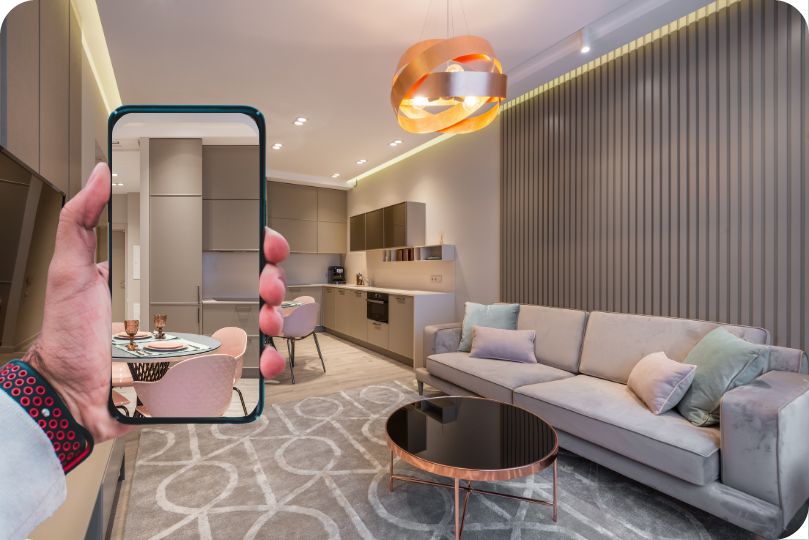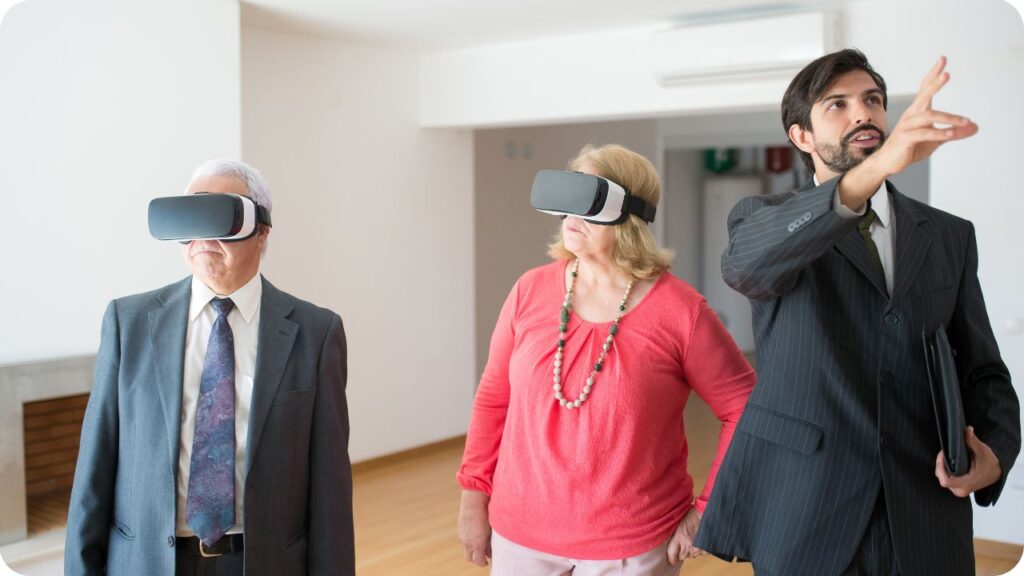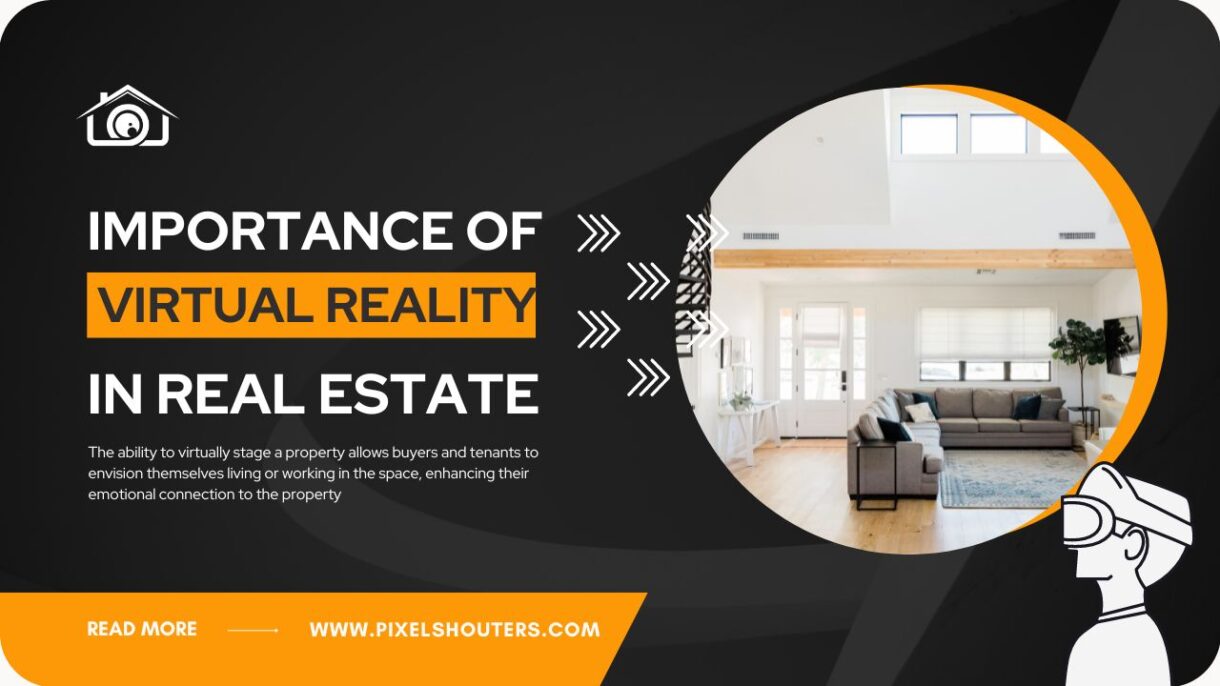Importance of Virtual Reality in Real Estate
A technology that has swept the globe is virtual reality (VR). It is revolutionizing various industries, including the real estate industry. In recent years, the real estate industry has embraced VR technology to enhance the buying and selling process for properties. The use of virtual reality in real estate is becoming increasingly popular, and it’s no surprise why. Virtual reality provides an immersive experience that allows potential buyers and tenants to view properties without physically visiting them. VR technology creates a simulated environment that mimics the real environment, giving potential buyers and tenants a realistic sense of the property.
The ability to virtually stage a property allows buyers and tenants to envision themselves living or working in the space, enhancing their emotional connection to the property. Virtual reality in real estate has numerous benefits, including cost and time savings, enhanced global reach, and enhanced house visits. VR technology eliminates the need for physical staging, saving both buyers and sellers time and money. It also allows real estate agents to showcase properties to potential buyers and tenants from different parts of the world, significantly enhancing the global reach of the real estate industry.
Table of Contents
The use of virtual reality in real estate is a game-changer. As the technology continues to improve, it is likely to become an even more significant part of the real estate industry. In this article, we will explore in detail how virtual reality is helping the real estate industry, its benefits, and its importance.

Virtual Reality in Real Estate
Technology known as virtual reality has been around for a time. It is a virtual experience that might be comparable to or dissimilar to the real world. Virtual reality has numerous applications across different industries, including real estate. Virtual reality in real estate involves the use of technology to create a simulated environment that allows potential buyers and tenants to view properties without having to visit them physically. Virtual reality in real estate is primarily used for virtual staging, architectural design, virtual tours, virtual commerce, and tenants’ virtual instructions.
1. Virtual Staging
Virtual staging involves the use of technology to create a simulated environment that allows potential buyers and tenants to see what a property would look like with furniture and decor. Virtual staging is a cost-effective alternative to physical staging, as it eliminates the need to purchase and move furniture. Virtual staging also allows real estate agents to showcase different furniture styles, colors, and arrangements to potential buyers and tenants. Virtual staging can significantly enhance a property’s appeal and help buyers and tenants visualize the potential of the space.
2. Architectural Design
Virtual reality in architectural design involves the use of technology to create 3D models of properties. Virtual reality in architectural design allows architects to create detailed 3D models of properties, which can be used to showcase the design and layout of the property to potential buyers and tenants. Virtual reality in architectural design also allows architects to make changes to the design and layout of the property quickly. These changes can be made in real-time, allowing architects to receive immediate feedback from clients.
3. Virtual Tours
Virtual tours in real estate involve the use of technology to create a simulated environment that allows potential buyers and tenants to view properties without having to visit them physically. Virtual tours can be created using 360-degree cameras, which capture the entire property. Virtual tours allow potential buyers and tenants to view properties from different angles and perspectives. Virtual tours also allow potential buyers and tenants to view the property at their own pace, which can significantly enhance their experience.

4. Virtual Commerce
Virtual commerce involves the use of technology to facilitate the buying and selling of properties online. Virtual commerce allows buyers and tenants to view properties online and make offers without having to visit the property physically. Virtual commerce also allows real estate agents to showcase properties to potential buyers and tenants from different parts of the world. This significantly enhances the global reach of the real estate industry and increases the likelihood of closing deals.
5. Tenants’ Virtual Instructions
Tenants’ virtual instructions involve the use of technology to provide tenants with virtual instructions on how to operate and maintain the property. Tenants’ virtual instructions can be provided through virtual reality headsets or online tutorials. Tenants’ virtual instructions can significantly enhance the tenant experience by providing them with detailed instructions on how to operate and maintain the property. Tenants’ virtual instructions can also reduce the need for physical maintenance, as tenants can troubleshoot issues themselves.

The Real Estate Advantages of Virtual Reality
Virtual reality in real estate has numerous benefits, including a sense of belonging, cost and time savings, global reach, and enhanced house visits.
1. Sense of Belonging
Virtual reality in real estate can create a sense of belonging for potential buyers and tenants. Virtual reality allows potential buyers and tenants to view properties in a simulated environment that can mimic the real environment. This allows potential buyers and tenants to envision themselves living or working in the space, which can significantly enhance their emotional connection to the property.
2. Cost and Time Savings
Virtual reality in real estate can save both buyers and sellers time and money. Virtual reality eliminates the need for physical staging, which can be expensive and time-consuming. Virtual reality also allows potential buyers and tenants to view properties without having to visit them physically, which can save them time and money. Virtual reality can also save real estate agents time and money by allowing them to showcase properties to potential buyers and tenants from different parts of the world without having to travel.
3. Global Reach
Virtual reality in real estate significantly enhances the global reach of the real estate industry. Virtual reality allows potential buyers and tenants from different parts of the world to view properties online and make offers without having to visit the property physically. Virtual reality also allows real estate agents to showcase properties to potential buyers and tenants from different parts of the world, which significantly enhances the global reach of the real estate industry.
4. Enhanced House Visits
Virtual reality in real estate significantly enhances the house visit experience for potential buyers and tenants. Virtual reality allows potential buyers and tenants to view properties in a simulated environment that can mimic the real environment. Virtual reality also allows potential buyers and tenants to view properties from different angles and perspectives, which can significantly enhance their experience.
Conclusion
Virtual reality is changing the real estate industry by providing cost-effective alternatives to physical staging, allowing architects to create detailed 3D models of properties, providing virtual tours to potential buyers and tenants, facilitating the buying and selling of properties online, and providing tenants with virtual instructions on how to operate and maintain the property.
Virtual reality in real estate has numerous benefits, including a sense of belonging, cost and time savings, global reach, and enhanced house visits. As virtual reality technology continues to improve, it is likely that it will become an even more significant part of the real estate industry.
